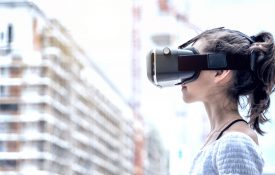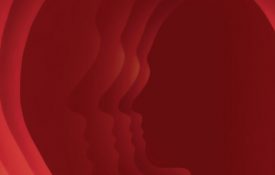-
Can Science Explain The Human Mind?
In The Devil's Dictionary, Ambrose Bierce describes the mind as "a mysterious form of matter secreted by the brain," engaged in a futile attempt to understand itself "with nothing but itself to know itself with." Questions about the limits of self-understanding have persisted long after Bierce's 1911 publication. One user on Quora asks: "Is the human brain intelligent enough to fully understand itself?" A satirical headline at The Onion reports that psychology has come to a halt as "weary researchers say the mind cannot possibly study itself." ... Psychology PhD student Sara Gottlieb and I decided to find out.
-
Tylenol May Help Ease The Pain Of Hurt Feelings
Nobody likes the feeling of being left out, and when it happens, we tend to describe these experiences with the same words we use to talk about the physical pain of, say, a toothache. "People say, 'Oh, that hurts,' " says Nathan DeWall, a professor of psychology at the University of Kentucky. DeWall and his colleagues were curious about the crossover between physical pain and emotional pain, so they began a series of experiments several years back. In one study, they found that acetaminophen (the active ingredient in Tylenol) seemed to reduce the sting of rejection that people experienced after they were excluded from a virtual ball-tossing game.
-
Science shows why it’s important to speak — not write — to people who disagree with you
There may be more to the phrase “the voice of reason” than meets the ear. When it comes to controversial ideas, a person's voice is more persuasive than the written word, according to a new study. In “The Humanizing Voice: Speech Can Reveal, and Text Conceal, The Presence of a Thoughtful Mind in The Midst of Disagreement” in a recent issue of Psychological Science, Juliana Schroeder of the University of California at Berkeley and faculty at the University of Chicago conducted several experiments exposing volunteers to ideas they agreed or disagreed with.
-

Augmented-Reality Technology Could Help Treat ‘Lazy Eye’
Wearable augmented-reality technology may help reduce interocular imbalance as people go about everyday activities.
-

New Research From Psychological Science
A sample of new research exploring implicit statistical learning and real-world decision making, sources of mimicry in social interactions, reward adaptation and learning in rats, and the effects of lingering cognitive states on memory.
-
Mayonnaise is disgusting, and science agrees
For much of the past year, I have fought a one-sided battle with a popular fast casual restaurant chain that we’ll call “Ready.” Unlike most restaurants, Ready doesn't make sandwiches, assemble salads, or otherwise perform acts of cookery upon customer request. Instead they sell nominally healthy, whole-ingredient-based pre-made soups, salads, and sandwiches. Because I’m lazy and impatient, I’m Ready’s perfect customer and not just because Ready has a location in Popular Sciences’building. They also have another four locations (including one that sells beer) along my commute. So you'd think that Ready sandwiches would be a regular part of my nutritional rotation.

